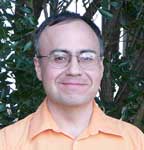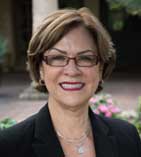More on the subject of so-called grit that is appropriately critical of this diversionary discourse. -Angela |
 |
by María “Cuca” Robledo Montecel, Ph.D., and Hector Bojorquez   A Agrowing chorus of academics, administrators and policymakers are steering educational research, money and the public’s imagination to conversations around resiliency and non-cognitive skills. Words like grit are now consistently being used to describe a student’s ability to persevere, to face challenges and to overcome failure. One reason for looking into these non-cognitive skills may be rooted in a search for why – after years of high-stakes testing, standards reform and progressive pedagogy – flat academic results persist. It is, of course, necessary to reassess decades-long efforts. Maybe, the voices behind non-cognitive research say, we now need to look at social-emotional factors that contribute to success. Maybe, just as we teach addition, subtraction, decoding and writing, we need to identify non-academic skills that are necessary for success. These may be fruitful paths. Too often though, questions are being framed in ways that yield little but negative attitudes, defeatism and deficit practices in the education of young people. The research dealing with non-cognitive skills concentrates on the importance of resiliency, an umbrella term for a person’s ability to persevere and overcome obstacles. Grittiness, goal-setting, self-discipline and motivation are non-cognitive skills that increasingly are the focus of current research, with resiliency as the unifying factor. Tools, surveys and questionnaires, such as Duckworth’s Grit Scale, are being used as a way of predicting a student’s ability to persevere. The logic is as follows: Intelligence and talents may be important markers of success, but one’s ability to shake off failure and try again – on a test, a challenge, a class – may be more important. Unfortunately, this logic and the hypotheses that follow from it may not frame things in a manner that is relevant to educational practices. Students’ apparent intellectual or socio-emotional characteristics cannot be the basis for questions as to how schools and educational systems categorize, teach and assess our youth. From the outset, indicators of these characteristics have not been practically nor conceptually shown to be valid. Also, the questions surrounding either one of these issues concentrates on what student’s “lack.” Metrics of student strengths or school effectiveness are rarely considered. Almost by definition, concentrating on student characteristics yields a list of “skills” they must possess in order to succeed. Nowhere is this more evident than with the field of non-cognitive skills. After all, non-cognitive skills, such as perseverance and resiliency, border on being defined as psychological traits that are popularly viewed as inborn. You either have grit or you don’t. And what is a school to do with that idea? Simply stated, the basic framing around these socio-psychological traits in education concentrate on students lacking certain attributes rather than the school’s role in shaping experiences that leverage student strengths instead of blaming perceived weaknesses. Regrettably, school administrators and researchers around the country are thinking only about assessing students’ grit and resilience. They are already assuming that students are lacking, rather than exploring how schools must change. There are, however, voices out there that are questioning the wisdom behind these new inquiries. In 2012, the University of Chicago Consortium on Chicago School Research (CCSR) published, Teaching Adolescents to Become Learners – The Role of Noncognitive Factors in Shaping School Performance: A Critical Literature Review. The CCSR review of the literature and research found that studies concentrating on grit and resiliency, viewed as psychosocial traits, show little conclusive evidence of being malleable. For example, studies on grit have been limited because they (1) concentrate on “high achieving” students as a means of defining this trait among (2) populations like West Point cadets. Unfortunately, this has steered the conversation into how students in high-need groups must lack the traits found in high achieving cadets from West Point. This not only presents a research problem but also casts high-need students as fundamentally lacking psychological traits needed to succeed. The CCSR report explicitly sees this as a problem because it views high-need students as “broken” and leaves schools with no actual approaches to strengthen non-cognitive skills. They conclude that research must address the role of schools in developing resiliency. IDRA is currently framing empirical and experiential paths that will assist schools to find their role in creating school environments that, themselves, are resilient and encourage resiliency. Resources Duckworth, A.L., & P.D. Quinn. “Development and Validation of the Short Grit Scale (grit-s),” Journal of Personality Assessment (2009) 91, 166-174. Farrington, C.A., & M. Roderick, E. Allensworth, J. Nagaoka, T.S. Keyes, D.W. Johnson, N.O. Beechum. Teaching Adolescents to Become Learners – The Role of Noncognitive Factors in Shaping School Performance: A Critical Literature Review (Chicago: University of Chicago Consortium on Chicago School Research, 2012). María “Cuca” Robledo Montecel, Ph.D., is IDRA’s president & CEO. Hector Bojorquez is director of IDRA’s Student Access Success Department. Comments and question maybe directed to them via email at feedback@idra.org. [©2015, IDRA. This article originally appeared in the January 2015 IDRA Newsletter by the Intercultural Development Research Association. Every effort has been made to maintain the content in its original form. However, accompanying charts and graphs may not be provided here. To receive a copy of the original article by mail or fax, please fill out our information request and feedback form. Permission to reproduce this article is granted provided the article is reprinted in its entirety and proper credit is given to IDRA and the author.] |











